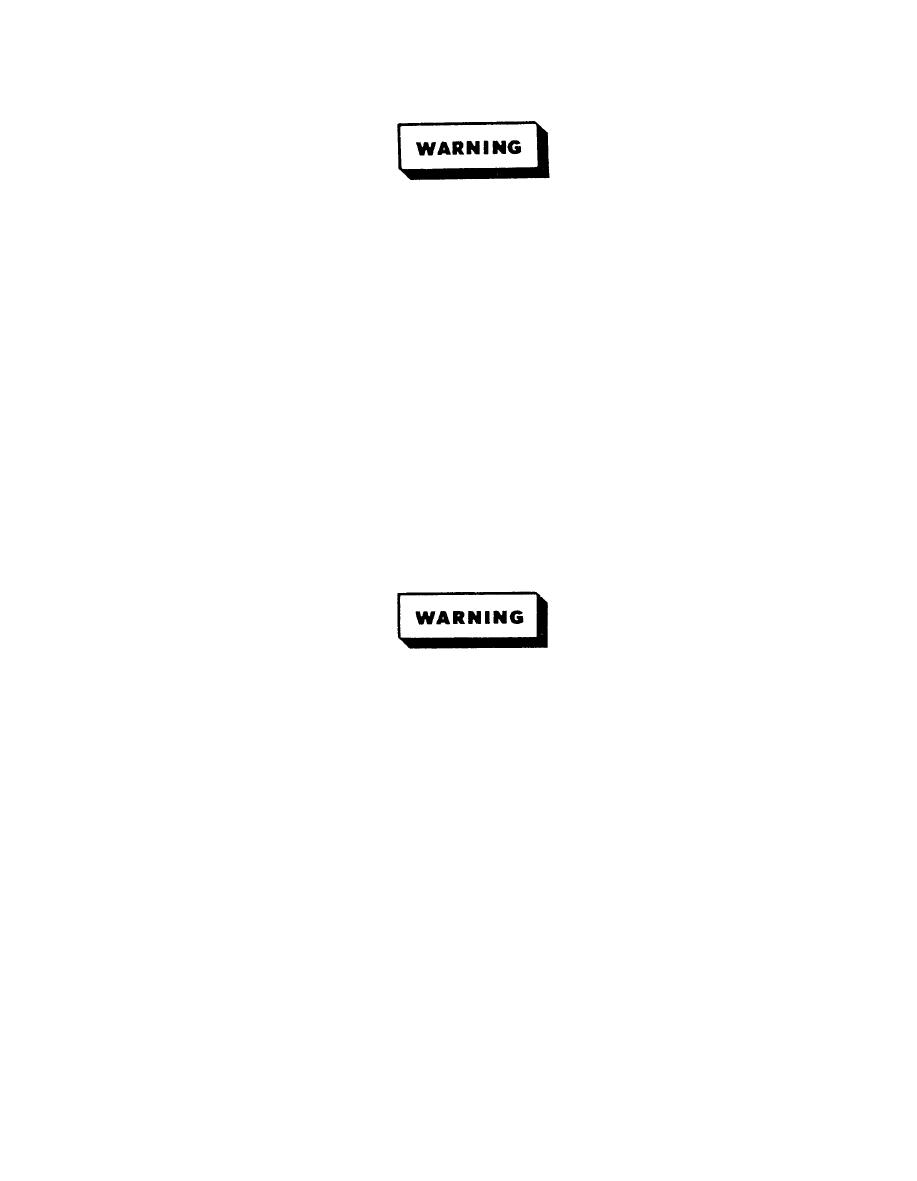

Custom Search
|
|

|
||
 8 MAINTENANCE.
8.1 Lubrication.
Do not gasoline,kerosene, or other low flashpoint solvents. A
serious explosion may result.
Establish a lubrication schedule for air compressors. Normal oil levels must
be maintained at all times. Use only lubricants recommended by the
manufacturer. Frequency of oil changes is dependent upon severity of service
and atmospheric dust and dirt. The time for oil changes can best be
determined by the physical condition of the oil. When changing oil, clean the
inside of the crankcase by wiping with clean, lint-free rags. If this is not
possible, use a good grade of flushing oil to remove any settled particles.
8.2 Packing. When replacing fibrous packing, thoroughly clean the stuffing
box of old packing and grease. Cover each piece of new packing with the
recommended lubricant. Separate the new rings at the split joint to place
them over the shaft. Place one ring of packing at a time in the stuffing box
and tamp firmly in place. Stagger the joints of each ring so they will not be
in line. After the last ring is in place, assemble the gland and tighten the
nuts evenly until snug. After a few minutes, loosen the nuts and retighten
them finger-tight.
8.3 Cleaning.
Do not use gasoline,kerosene, or other low flashpoint solvents. A
serious explosion may result.
Cylinder jackets of water-cooled compressors should be cleaned annually with
water. Dirt accumulations interfere with water circulation. Cleaning can be
accomplished using a small hose nozzle to play water into the jackets. On
compressors fitted with mechanical lubricators, cylinders may be cleaned with
a nonflammable cleaning fluid.
8.4 Valves. Replace all defective valve parts as required. When a valve
disk or plate wears to less than one-half its original thickness, it should be
replaced. Valve seats may be resurfaced by lapping or regrinding. On some
valve designs it is necessary to check the lift after resurfacing. If the
lift is found to be more than that recommended by the manufacturer, the bumper
must be cut down an equal amount. Failure to do this results in more rapid
valve and spring wear. Carbon deposits should be removed and the valve
assembly washed in nonflammable cleaning fluid. Before replacing valves, make
sure the valve seat and cover plate gaskets are in good condition. If any
defects are found, replace the gaskets. Make sure the valve is returned to
2-8
|
 |
|
 |
||